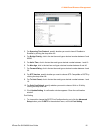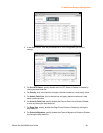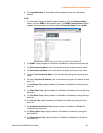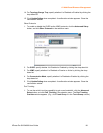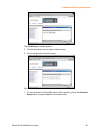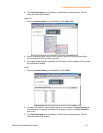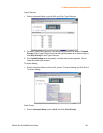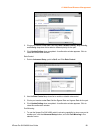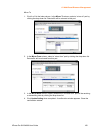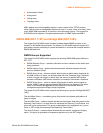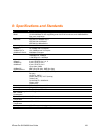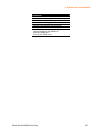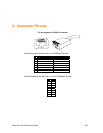7: SNMP & RMON Management
XPress-Pro SW 94000 User Guide 102
Authentication failure
Rising alarm
Falling alarm
Topology Alarm
MIB-2 defines a set of manageable objects in various layers of the TCP/IP protocol
suites. MIB-2 covers all manageable objects from layer 1 to layer 4 and, as a result, is the
major SNMP MIB supported by all vendors in the networking industry. The Xpress-Pro
SW 94000 switch supports a complete implementation of SNMP Agent and MIB-2.
RMON MIB (RFC 1757) and Bridge MIB (RFC 1493)
The Xpress-Pro SW 94000 switch provides hardware-based RMON counters in the
Xpress-Pro SW 94000 switch chipset. The Xpress-Pro SW 94000 switch manager CPU
polls these counters periodically to collect the statistics in a format that complies with the
RMON MIB definition.
RMON Groups Supported
The Xpress-Pro SW 94000 switch supports the following RMON MIB groups defined in
RFC 1757:
RMON Statistics Group – maintains utilization and error statistics for the switch port
being monitored.
RMON History Group – gathers and stores periodic statistical samples from the
previous Statistics Group.
RMON Alarm Group – allows a network administrator to define alarm thresholds for
any MIB variable. An alarm can be associated with Low Threshold, High Threshold,
or both. A trigger can trigger an alarm when the value of a specific MIB variable
exceeds a threshold, falls below a threshold, or exceeds or falls below a threshold.
RMON Event Group – allows a network administrator to define actions based on
alarms. SNMP Traps are generated when RMON Alarms are triggered. The action
taken in the Network Management Station depends on the specific network
management application.Bridge Groups Supported
The Xpress-Pro SW 94000 switch supports the following four groups of Bridge MIB (RFC
1493):
The dot1dBase Group – a mandatory group that contains the objects applicable to all
types of bridges.
The dot1dStp Group – contains objects that denote the bridge’s state with respect to the
Spanning Tree Protocol. If a node does not implement the Spanning Tree Protocol, this
group will not be implemented. This group is applicable to any transparent only, source
route, or SRT bridge that implements the Spanning Tree Protocol.
The dot1dTp Group – contains objects that describe the entity’s transparent bridging
status. This group is applicable to transparent operation only and SRT bridges.



